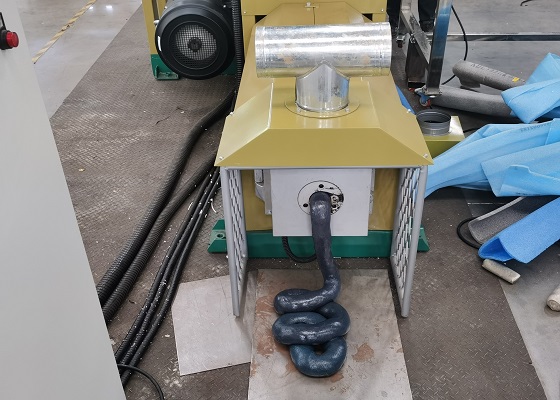Make reasonable use of foam densifier to avoid the white pollution in an era when the use of foam is increasing
The demand for various foams in many industries is only increasing, so we should be alert to the issue of foam recycling. If the problem of foam recycling with foam densifier is not properly treated, it will be a matter of time before serious white pollution is caused.
Innovative uses in a range of industries are driving the worldwide foam market's expansion and increasing consumer interest. Infrastructure expansion, the renovation of non-residential buildings, and the building of new homes are the main drivers of growth. The expansion is expected to be driven by a moderate 5.0% CAGR in foam demand over the next ten years; this demand saw a CAGR of 6.0% between 2019 and 2023.

One important driver is the automobile industry's increased demand. Foam is used by automakers for a variety of purposes, including soundproofing, seating, and insulation. Its low weight and vibration-absorbing capacity improve ride quality and lower noise levels in cars. The need for foam packaging solutions is growing along with the popularity of online shopping. Foam is a useful tool for protecting and cushioning fragile goods during transit, especially with the rise of eCommerce. This improves the general client experience while lowering the possibility of damage.
Since the demand for various foams in so many industries is only increasing, we should be wary of the issue of foam recycling. If the issue of foam recycling is not properly treated, it will be a matter of time before serious white pollution is caused. Although recycling is urgent, we should still recycle in a targeted manner. The first thing we should understand is that the types of foam used in different industries are different. For example, the packaging commonly used in online shopping is generally EPS foam and EPE foam, while the automotive industry generally uses EPP foam.
.jpg)
If you want to recycle foam, you must choose a suitable equipment for compression. Because foam waste itself is full of air, bulky and difficult to transport, it must be compressed. If the types of foam you need to process are complex, for example, if you are working in a recycling bin, you can use foam densifier for recycling. GREENMAX foam densifier can process many types of foam, including EPS, EPE, EPP, and XPS foam. , the compression ratio can reach 90:1.After a series of steps of crushing, heating, melting and extrusion, we can obtain foam ingots with higher density, which is the importance of using foam densifier. If the compression step is missing, then a series of subsequent recycling and reuse tasks will become extremely difficult.

At present, the application of GREENMAX densifier is not limited to the two industries we mentioned above. GREENMAX helps the foam production industry, foam cutting industry, agriculture, fishery, construction industry and various emerging industries, and any industry that involves foam waste recycling , if you have relevant recycling questions, please feel free to contact us!
